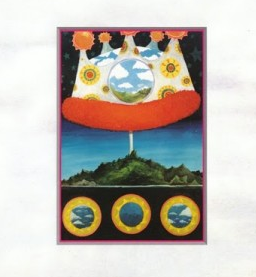Music You Should Be Listening To: The Olivia Tremor Control
Near the end of 2011 there was a reissue of The Olivia Tremor Control’s album, Music From The Unrealized Film Script: Dusk At Cubist Castle. While the album was first released in 1996, it floated under most radio radars due to a lull in interest in post-Beatles-eque psychedelic pop. However, the album is now gaining more popularity than it had in the late nineties. The Olivia Tremor Control is one of the forgotten frontrunners of the ever-growing psychedelic pop experimental genre, and it is finally being recognized as so almost 20 years later. The band was originally formed by the label's remnants, Elephant 6, sometimes referred to jokingly as a cult. The group is made up of Robert Schneider, Bill Doss, Will Cullen Hart and the notable Jeff Magnum. The Olivia Tremor Control was originally one of the many projects started by the recording company, yet it failed to gain as much publicity as some of its contemporary projects, including Neutral Milk Hotel and Of Montreal.
The album consists of only a few solid, listenable tracks surrounded by musical experiments to set the mood for the next whole song. The structure of the album is comparable to the Flaming Lips 2009 release, Embryonic. Most of the songs set focus on one or two instrumental lines that serve as transitions when the album is listened to in its entirety.
Many of the songs sound like acid-fueled leftover melodies from previously-whole songs that have been taken apart to be listened to and analyzed as separate pieces. For example; there is a ten-track montage of the song “Green Typewriters” divided into ten different tracks. These new pieces of the old song range from only 24 seconds, to almost ten minutes.
The tracks are much more than just music though; they are pieces of art and thought that incorporate not only instrumental sound but also the sounds of life. There are gaps of silence, drops of water, overhead plane engines, alarms and monitors clicking away. The album is more of an attempt to put a psychedelic and occasionally therapeutic experience on tape. Many times what was once musical is broken down to the bare bones of sounds that tell not just one but a thousand different stories. Many of the songs are filled with angst and nostalgia that grip the listener.
The compelling factor is not necessarily the lyrics but the song itself. There are tastes of The Velvet Underground, The Beatles and The Flaming Lips that made me feel like I connected not only to the individual tracks, but to each song’s inspiration. Whether it’s a ticking of a clock or a chord from an old song, there are as many musical allusions in the album as there are literary allusions in a T.S. Eliot poem. There is no simple or easy explanation of the album: it has to be digested. The songs are confusing and almost difficult to process.
However, once the audience is about to lose interest in seemingly incoherent and unorganized noise, an upbeat and cohesive catchy track draws them back in, even if only to be disappointed by the next intervals of transition. It is as if the members of Elephant 6 are attempting to have a conversation with their listeners and not just entertain them. The lyrics are simple, but arguably meaningless at points. The production sounds like a rehearsal—as if it were some inside joke between the members of the band themselves. For all we know, it may be.
The album is as at times as creative and peppy as an early Of Montreal song, as nostalgic as The Apples in Stereo and as brave as Neutral Milk Hotel. By taking the best aspects from all of their projects, The Olivia Tremor Control stands as Elephant 6’s most important record. Forging new musical horizons, it is for artists looking for their places amongst the rubble left by alternative bands of the past.

